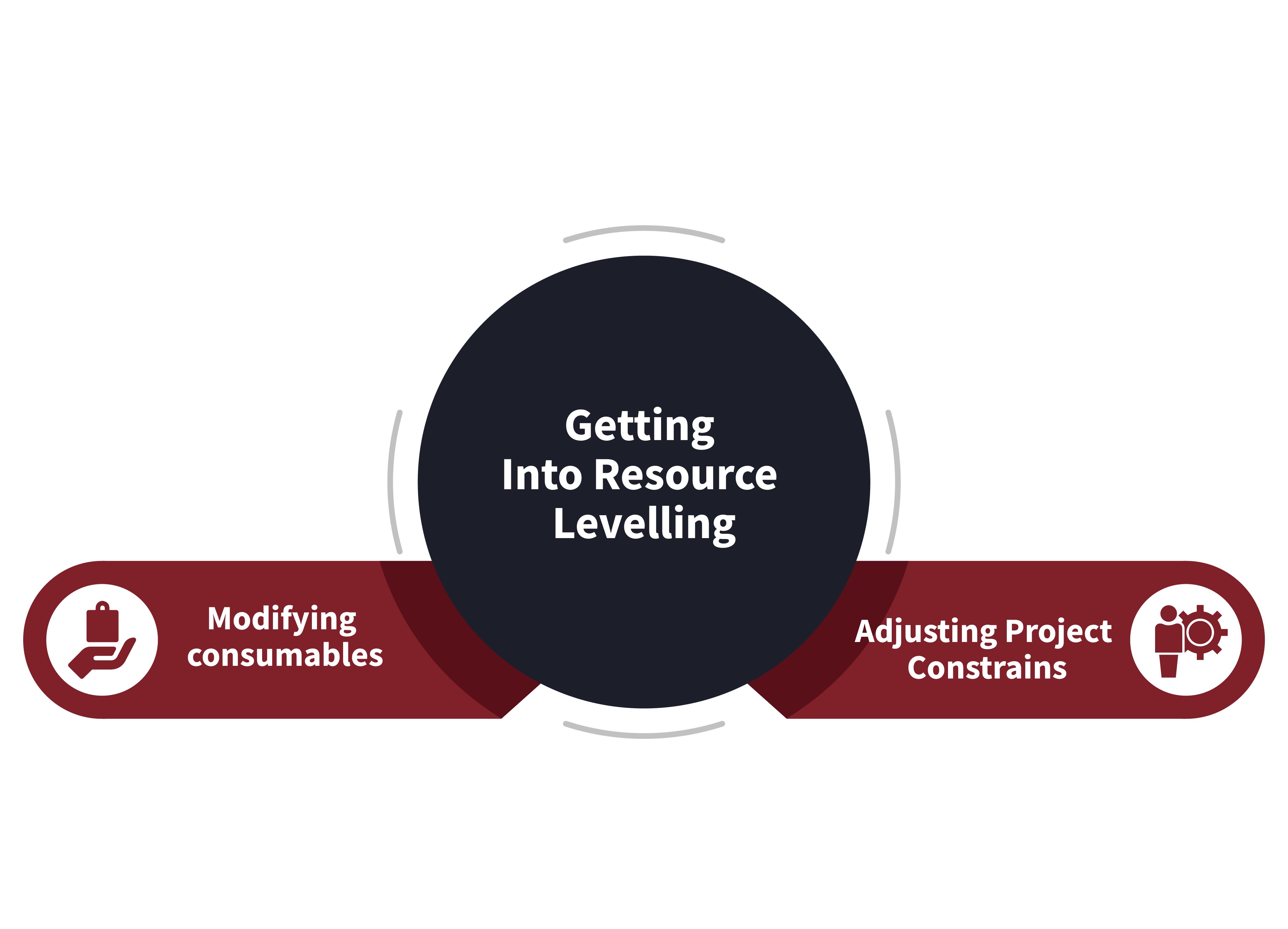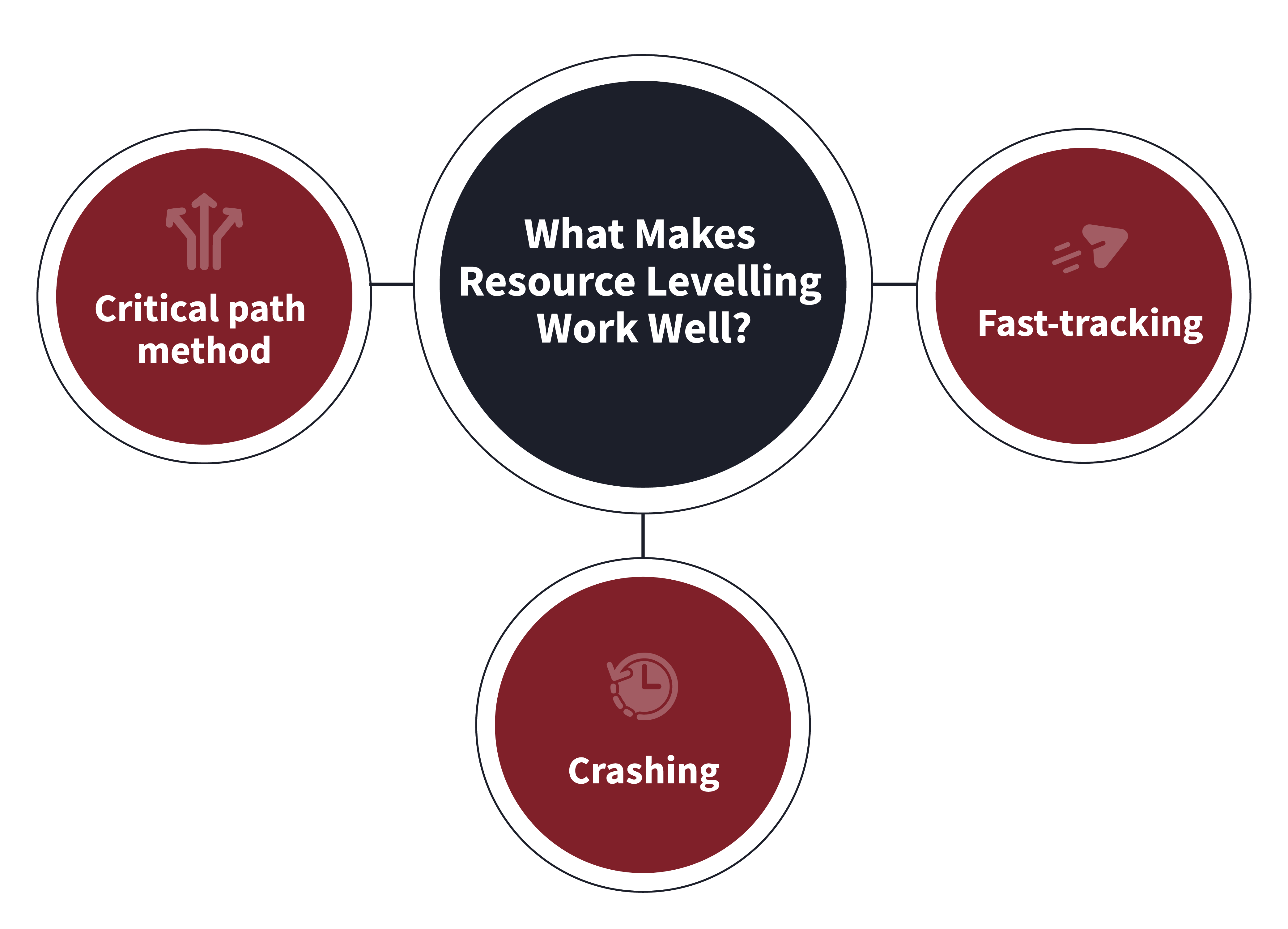Anyone can limp along towards a final project deadline. Still, genuine experts stand out because they don't just make the journey alone: They also bring the proper kit along with them, including the many resources needed to push through obstacles, meet client demands, and carry the whole team over the finish line.
Resource levelling lets project managers ensure they don't run out of the critical pieces to achieve essential goals and complete the overall task. Here are the fundamentals and how your project management tools could set you up with a thriving high performance culture.
Resource Levelling for the Uninitiated
If your projects are like journeys, then resources are the fuel that lets you make the trek. In business terms, you can generally divide project resources into a few broad categories, such as time, materials, and tools, but you've got plenty of leeways here. For instance, managing a project that used different materials, such as reusable and consumable office supplies, might make sense to break things down even further. It's also common to factor human resources into your levelling efforts.
No matter what or whom you're working with; resource levelling can help you do more. The whole point of this strategy is to ensure you have the right amount of resources for a given job. In other words, it's a technique geared toward avoiding common problems such as overallocation, overbooking, and similar logistical conflicts to work smarter, not harder.
Getting Into Resource Levelling
One of the handy aspects of resource levelling is that it's open to interpretation. There are a few different ways to go about it, so you can choose the strategy that fits your team, project, or situation:

Modifying How You Use Consumables
Imagine that you're leading a team of fashion designers working on a seasonal apparel collection. You want to keep things fresh, so you've tasked each creative with producing different mockups using the same palette of themed fabrics. The problem is that since the designers are working independently, you might run out of certain materials, some of which are too expensive to buy in bulk while you're still in the trial-and-error phase.
A resource levelling solution might mitigate this overallocation problem by obtaining extra sample fabrics or restructuring the project so that everyone works with stand-in materials before the production team creates the final samples. Alternatively, you could have your designer's requisition materials using a unified project management software tool that kept you appraised of ongoing needs.
Adjusting Project Constraints

Your law firm decides to embark on an educational, charitable outreach program to drum up publicity among your client base. You put out a call on social media for questions the community might be interested in and assign your firm's subject matter experts to create presentations on potential solutions. Unfortunately, you hit a huge snag when you discover that some of the submissions go beyond your team's expertise.
One way to solve this conundrum with resource levelling might involve pushing back the launch date so that you could respond to as many questions as possible and establish your firm as an authoritative source of answers. Another good option could be to reallocate your human resources by assigning more people to work on the most challenging questions using a project management system that makes it easy to divide the work and assign subtasks.
What Makes Resource Levelling Work Well?

Having the right corporate tools to put your chosen technique into play is key to a practical resource levelling strategy. While making manual lists of resources, dependent tasks, and activities is a good start, it's neither efficient nor easy. Dedicated project management tools enhance your resource oversight capacity by aggregating the essentials that make levelling techniques meaningful: The time tracking data, work planning tools, and inter-team conversation histories that define where constraints lie.
Software systems also grant project managers the flexibility to adapt, a crucial aspect of any forward-thinking levelling methodology. In addition to taking the guesswork out of scheduling, these tools up your game when it comes to delegating tasks precisely and reducing repetitive tasks, so you can gauge the impacts of your resource allocation practices without struggling to filter through the noise.
Such accuracy heightens the utility of levelling implementations to boot. For instance, it's much easier to leverage the following well-known techniques when you keep your leaders informed with streamlined, hassle-free data points:

- The critical path method categorises tasks or task paths (ordered sequences of project activities) according to their criticality. Then, you'll use the resulting task prioritisation scheme to calculate how long the project should take and decide how best to ensure scheduling flexibility. The critical chain method is a similar strategy that accounts for constraints by periodically assessing resource availability and identifying which task chain monopolises schedule time or other resources.
- With fast-tracking, you attack the problem from multiple angles simultaneously. As long as the tasks you fast track don't depend on each other, this is an excellent way to deliver results on time or early with the aid of a weekly workplan.
- Crashing is an alternative to fast-tracking that reduces a project's lead time by allocating additional resources. This method must account for resource costs and task priorities for maximum efficacy.
Resource Leveling with Tessaract
Resource levelling is only one of many methodologies for giving yourself a project management edge. For instance, you'll commonly follow up with resource smoothing, where you try to allocate schedule time as evenly as possible. Based on the results of your initial levelling, you might also reassign oversight roles, such as by designating a resource manager to track and allocate essentials on the fly.
Tessaract business management software bridges these techniques with stellar results by staying ahead with the cloud. It lets you glean the maximum advantage from your chosen strategy, optimising crucial workflow processes such as digital signing and task delegation to keep your levelling practices agile. By informing you with uniform views and keeping constraints firmly in sight, Tessaract enhances your perspective through optimising workflow automation, contributing to project management that accounts for easily overlooked details without stretching your focus too thin.
Find out why so many enterprises count on Tessaract to drive their projects to completion. Try a demo today.
